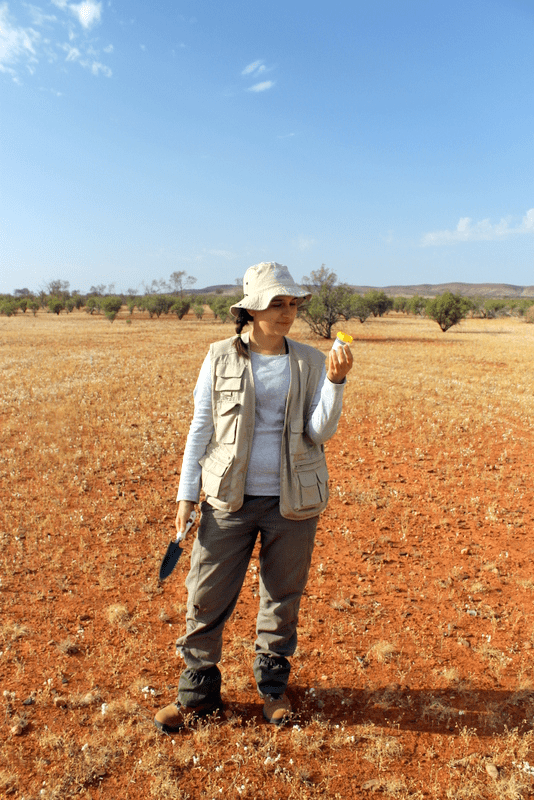TERN is providing infrastructure needed to support science and environmental management in northern Australia’s tropical savanna grazing lands.
CSIRO’s Gabriela Arcoverde has been stirring up ant nests from one end of the Northern Territory to the other. Ms Arcoverde has collected tens of thousands of these industrious critters along TERN’s North Australian Tropical Transect (NATT), as part of a project to determine what impact cattle grazing is having on ants in tropical savannas.
 |
The NATT’s living laboratory is enabling scientists, like CSIRO’s Gabriela Arcoverde (above), to better understand ecosystem processes from different angles, such as biodiversity, soils, water and carbon stocks. |
“These ants are playing vital roles in the health of the environment. As highly abundant predators and scavengers they play a key role in nutrient cycling and energy flow, and their burrowing activities promote soil health,” she said.
“If the ants are in good shape then this indicates that the environment is likewise in good shape, which is why ants are increasingly being used as biological indicators of environmental health.”
After months of research Ms Arcoverde and her team concluded that savanna grazing—at least under the management regimes at the research site—is highly compatible with the conservation of ant biodiversity.
“Habitat type is the primary factor influencing the number and diversity of ant species, and moderate levels of grazing have a very limited effect,” Ms Arcoverde said.
Grazing changes species composition, but it doesn’t necessarily alter total ant richness and abundance.
Ms Arcoverde’s research as a Charles Darwin University PhD student is just one of many collaborative studies that are utilising TERN’s network of infrastructure in the NT, which is drawn together around the ‘backbone’ of the NATT, a 1,000 km long environmental monitoring transect that starts outside Darwin and stretches into the dry heart of the Territory and part of TERN’s Australian Transect Network.
The NATT, which incorporates a series of TERN OzFlux sites, as well as two TERN SuperSites, is facilitating a number of other projects that are:
- improving understanding of northern Australia’s acidic groundwater, and how this might change with changes in land use;
- helping universities developing their course curriculums and improve the quality and cost-effectiveness of undergraduate education;
- increasing our understanding of the impacts cyclones have on carbon dynamics in tropical savanna ecosystems; and
- disentangling seasonal vegetation changes to help us better understand carbon dynamics.
The NATT’s living laboratory is enabling scientists to better understand ecosystem processes from different angles, such as biodiversity, soils, water and carbon stocks.
With an economy that relies heavily on agriculture, mining and tourism, such science, monitoring and management of the NT’s ecosystems is essential to support the livelihood of local communities. TERN is proud to be playing a key role in this space by providing infrastructure needed to support ecosystem science and management across the north.
- Data collected from approximately 130 sites along the NATT is now openly-available via TERN Eco-informatics’ ÆKOS Data Portal and Soils to Satellites.
- More information on the Australian Transect Network can be found on their website or by contacting Ian Fox.
Published in TERN’s Ecosystem Studies newsletter September 2015






